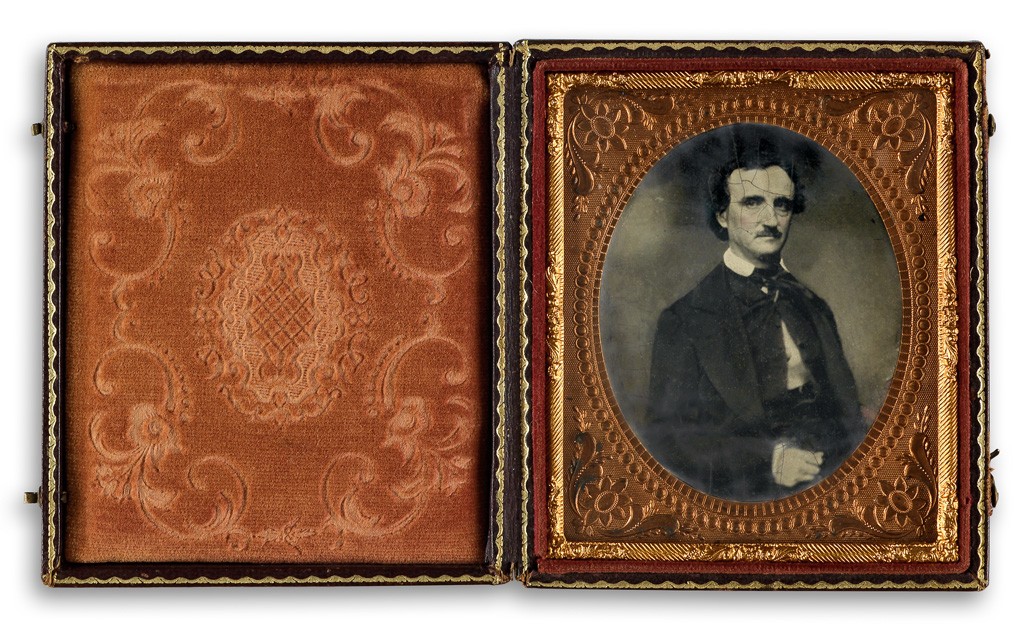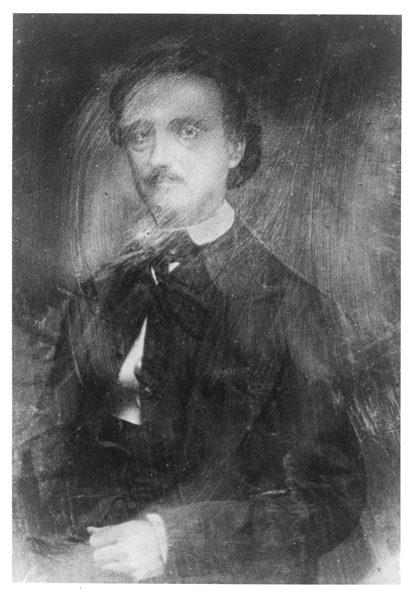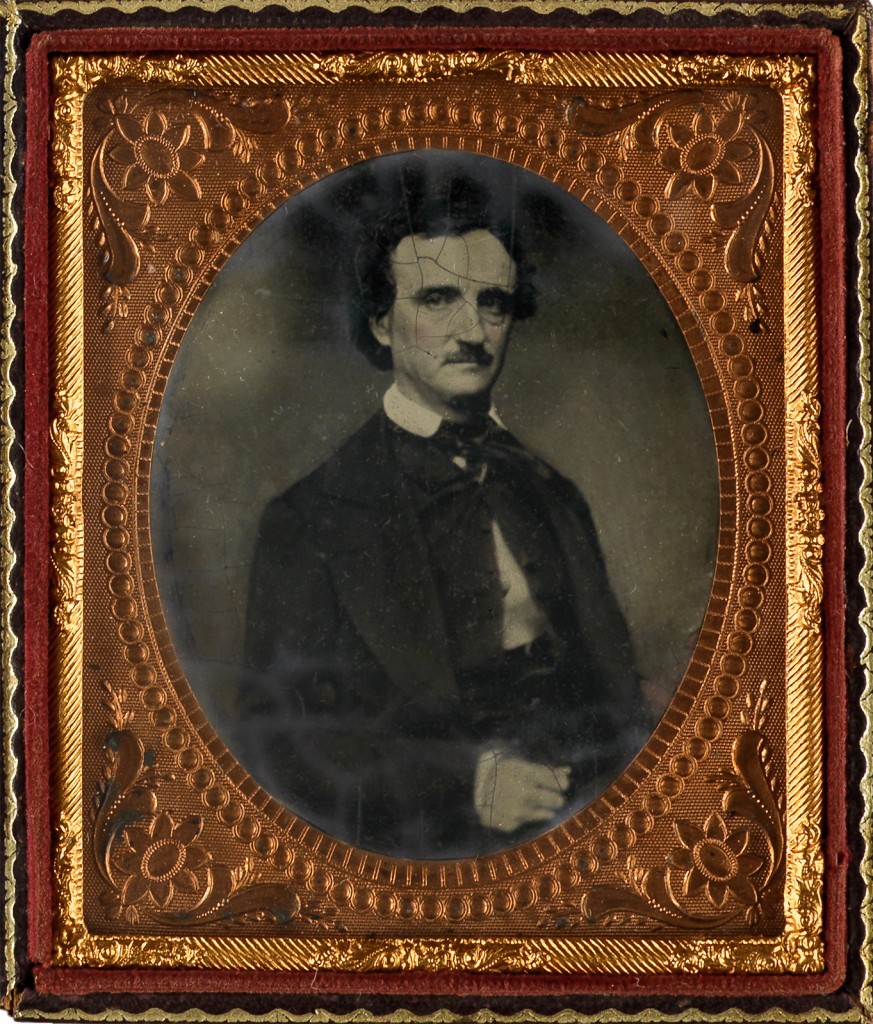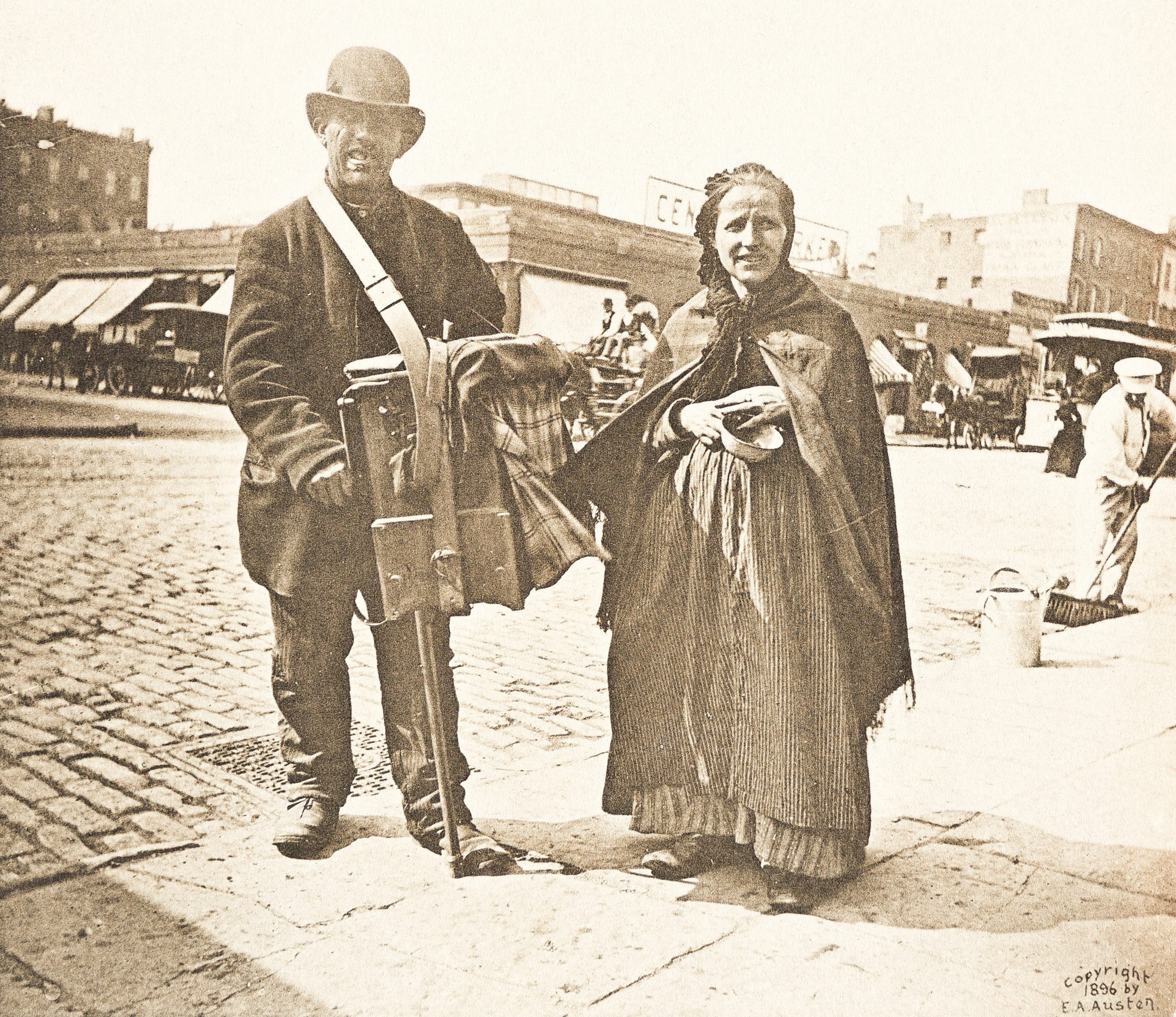Edgar Allan Poe: Birthday & A Lost Photograph
Today, on what would be Edgar Allan Poe’s 207th birthday, we take a look at an exceedingly rare and unusual lot in our upcoming sale of Icons & Images: Photographs & Photobooks on February 14, 2017.
Edgar Allan Poe was born in Boston on January 19, 1809. He was a prolific poet, writer of short stories, and essayist whose reputation is as an enduring master of the macabre. His lifelong obsession with horror — crime, drugs, premature burial, mourning, the reanimation of the dead — position him as an anomalous historic figure whose brilliance often eluded his Victorian contemporaries.

Poe earned his living as a writer and became widely known as a critic, but he achieved notoriety and fame with his poem The Raven. Despite his copious output, he lived in poverty. Imagined today as a morose, Gothic figure, the writer was apparently quite genteel and generous. Poe spent the last three years of his life in a picturesque cottage in the Bronx, where he penned many of his best-known poetical works, including Annabel Lee, The Bells and The Cask of Amontillado.
Poe sat for many photographic portraits during his short life. The image offered here is a tintype after the so-called “Traylor daguerreotype” named for legendary Poe collector Robert Lee Traylor, who once owned the image. The daguerreotype was made in 1849 by William A. Pratt in Richmond, Virginia, and the tintype was produced later. According to the Edgar Allan Poe Society of Baltimore:
Traylor loaned the daguerreotype to the Chicago publishers Stone & Kimball, for inclusion as a frontispiece to their ten-volume edition of The Works of Edgar Allan Poe. Regrettably, an attempt to “clean” the plate was made, and the image was damaged beyond repair. Traylor was deeply distraught when the ruined daguerreotype was returned to him, and years later his daughter, Mary Gavin Traylor, recalled her father’s grief as “the first tragic memory I have, affecting even the little ones in the household.” The daguerreotype remained in Traylor’s hands until at least 1904, when it was reproduced in its ruined state in The Independent magazine, accompanied by a note explaining that the plate had been “accidently [sic] injured by chemicals in the effort to bring out the features more clearly.” The fate of the daguerreotype after Traylor’s death in 1907 is unknown.

Poe’s visage is grave and poetic. His penetrating, deep-set eyes, dark hair and black and disheveled dress seem to portend his premature and lonely death just three weeks later. An image of the ruined daguerreotype, perhaps from the magazine, is in the collection of the Poe Foundation in Richmond, though the original has been lost.
It is fitting that mystery would shroud the one of the last known photographs of the author.


















